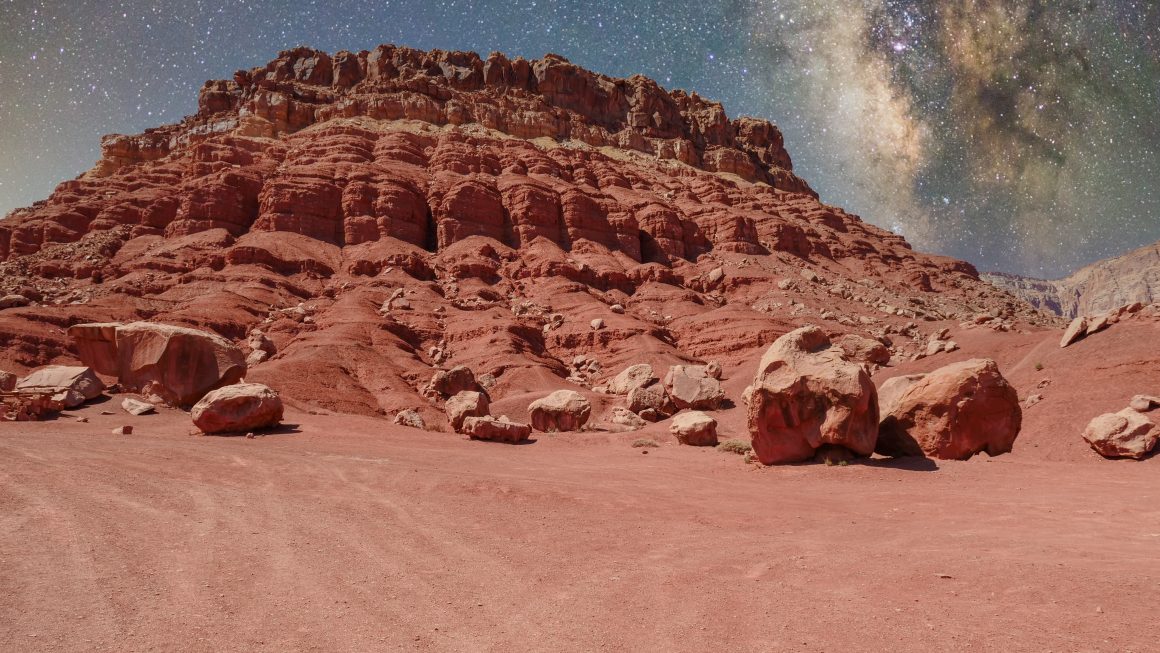
U of C researcher studies Mars rover samples for clues of life
By Ramiro Bustamante Torres, September 8 2022—
The current Mars rover, Curiosity, has explored the depths of Gale Crater and the heights of Mount Sharp, sending valuable data back to Earth. A group of researchers have collaborated with NASA to use the samples of Curiosity to study the geological context of Mars’ surface and find data if Mars had the possibility of supporting life.
Dr. Benjamin Tutolo is an associate professor in the Department of Geoscience at the University of Calgary — he applied to be a participant in the Mars Science Laboratory (MSL) mission and was brought in along with the Canadian Space Agency (CSA) which provided more funding to the project. Tutolo was able to use the data from the Mars rover to study the samples taken from Gale Crater and Mount Sharp.
“[The Mars rover is] climbing this mountain in the center of Gale Crater, and we’re getting into more and more magnesium sulphate minerals. We’re going from clay-rich material from the floor of the crater, which implies that we had a wet, what they call a fluviolacustrine environment — a river-fed lake,” said Tutolo. “My particular role was to understand the geochemistry and mineralogy, how it was recorded in the rock record and how we can interpret that rock record to tell us about the habitability of Mars more generally.”
Mount Sharp is found inside of Gale Crater and it was formed around 3.5 billion years ago, which contains the younger sediments compared to the deeper parts of the crater. The difference of time between the oldest and youngest layers studied is estimated at 100 million years. Tutolo and his team aim to understand the transition of the rock record — this is the present layers of rock found at the site.

“We have to interpret the things that happened after they were deposited in the context of what actually is still there,” said Tutolo. “One of the goals of the mission is to understand the transition and if the planet is still habitable after it becomes drier or not. We’re finally at the point where we can see that transition in the rocks. That’s what we’re all sort of focusing on and excited about right now.”
The magnesium sulphates found as the rover climbs the mountain are commonly known as epsomites or epsom salts. This can be also found on Earth, specifically in Basque Lakes near Cache Creek, B.C. where Tutolo had a group conducting field research to study how the magnesium sulphate deposits on the rock record. However, the lakes on Earth contain brine shrimp and other biotic factors.
“Whenever we’re looking at the rock record, [we want to] understand the processes that give you the rocks,” said Tutolo. “You have to understand or look at analogous active environments to understand how they are recording themselves in the current rock record, and then interpret older rocks on Mars. And of course, no analog is perfect. Can we use the principles of geochemistry and physics to understand how their effects are sort of overprinting and how can we remove them?”
The project will be three years long and will involve other researchers in the Department of Geoscience — Dr. Steve Larter and Dr. Rachel Lauer — as well as graduate and undergraduate students. If you need more information on the project, visit the university’s press release here.
